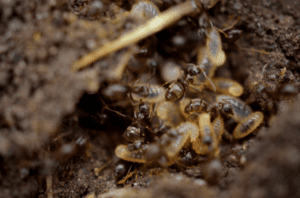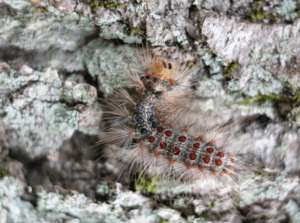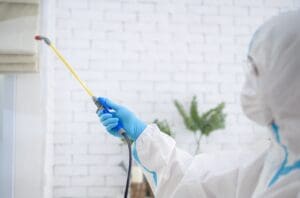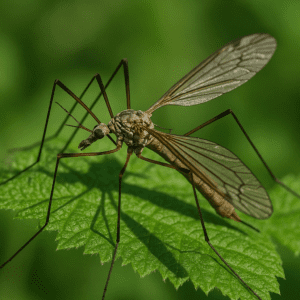

If you live in New Jersey, chances are that you’re more familiar with vermin and other pests than people living in other American cities. And you’re probably painfully aware of the truth of the old saying about them: when you can see one rat, there are sure to be a whole lot more out of sight. How to prevent rats and mice from entering your home or business becomes crucial in such circumstances.
No one is thrilled to see cockroaches or hear mosquitoes, but rodents are some of the most costly and hazardous pests to find in your home or business. Their habits pose a unique risk. Not only are they highly destructive, but they also carry diseases, some of which are deadly to humans and our companion species.
All across New Jersey, the secondary plague of business closures as a result of the pandemic has left rodents on the lookout for new sources of food, and they’re more evident than ever before. When it comes to the risks posed by mouse and rat infestations, forewarned is forearmed. So, we have compiled a manual detailing the causes and symptoms of the main rodent-borne illnesses in the United States, and some preventative measures you can take so you don’t have to play real-life whack-a-mole.



Diseases Spread By Rats And Mice
Leptospirosis
Leptospirosis is a bacteria spread by many animals; it is not simply spread by vermin. A person can contract leptospirosis by consuming foods and water contaminated with the bacterium, or through physical touch: If a person’s skin or mucous membranes comes into contact with contaminated soil or water. Symptoms will usually set in abruptly, between 2 days and 4 weeks after exposure, but some people may present as asymptomatic. Onset occurs in two phases. A person in the first phase may experience fever, chills, abdominal pain, diarrhea, vomiting, headache, muscle aches, bloodshot eyes, jaundice, and skin irritation. A person may think they have recovered, only to be hit by the severer second phase, which may include liver or kidney failure, respiratory distress, and meningitis, all of which are potentially fatal without medical intervention Pets are also susceptible to leptospirosis, less so cats. Dog symptoms include fever, abdominal pain, vomiting, diarrhea, refusal to eat, severe weakness and muscle pain, stiffness, severe depression, and the inability to conceive.
Hantavirus Pulmonary Syndrome
The Hantavirus is spread primarily by mice of the deer and white-footed varieties, and by cotton and rice rats. Under normal circumstances, a person may contract the hantavirus through direct contact with the rodents, their urine and droppings, or, in more likelihood in an enclosed space, by inhaling dust contaminated with microscopic amounts of urine or droppings. You can also become infected with the virus through the bites of infected rodents, and while this is less common you should always take precautions when dealing with vermin. Symptoms of infection develop between 1- and 8 weeks following contamination, manifesting in two distinct phases. Widespread early symptoms include lethargy, heightened body temperature, and muscle pains. Less common early symptoms that manifest in roughly half of all Hantavirus cases include chills, lightheadedness, migraines, severe abdominal discomfort, nausea, vomiting, and diarrhea. The severe symptoms begin to set in between 4 and 10 days after the initial symptoms began. The severe symptoms start with coughing but progress to shortness of breath, and eventual hospitalization as the lungs fill with fluid. Hantavirus has a mortality rate of 38%. Between 10 and 50 cases are reported in the United States each year, but none have been reported in New Jersey.Salmonellosis
Salmonellosis, an infection from the bacteria salmonella, can be spread by many vectors of which rats and mice are but two of many. When they do spread the disease, humans contract it by consuming food or water that has been contaminated by rat feces. Symptoms appear relatively quickly: between 6 hours and 6 days after exposure, but some sufferers can appear asymptomatic for several weeks. Symptoms can last for days or weeks. The likely symptoms of salmonellosis are abdominal pain, fever, and diarrhea. Some varieties of salmonella can cause infections of the blood, bones, joints, and nervous system.
Rat-Bite Fever (RBF)
Rat-bite fever, or RBF, can be caused by a pair of bacteria spread by both rats and mice. Of the two bacteria responsible for causing RBF, only one is found locally, and that is streptobacillus moniliformis, which spreads streptobacilli RBF. While it hardly needs saying that it is spread by rat bites, it can also be contracted by contact with dead vermin, or by consuming food or water that is contaminated with rat droppings, then it is referred to as Haverhill fever. The onset of symptoms occurs between 3 days and 3 weeks after contact with the bacteria when the bite would already have been apparently healed. The likely symptoms of Streptobacillary RBF are fever, vomiting, migraines, and muscle pains. Half of sufferers report experiencing joint pain or swelling, and approximately 3 in 4 patients break out in a rash in the extremities, having the appearance of eczema. Sufferers of Haverhill fever also report sore throats and severe vomiting. Some of the complications accompanying Streptobacillary RBF include internal abscesses, liver or kidney infections, pneumonia, meningitis, and cardio-pulmonary infections. It has a 10% fatality rate.Lymphocytic Choriomeningitis (LCM)
Lymphocytic choriomeningitis or LCM for short is a disease that’s caused by the lymphocytic choriomeningitis virus (LCMV). House mice are primarily responsible for spreading it, but domesticated pet rodents can transmit the virus to humans. An estimated 5% of house mice in the United States carry LCMV. Humans can contract LCM either through direct contact with vermin or their urine and droppings or by inhaling dust containing microscopic particles of rodent urine and droppings. Bite wounds from infected rodents may spread the disease, albeit in rarer occurrences. Like many of these diseases, it comes in two phases. The first phase’s symptoms manifest between a week and a fortnight after contamination. The common symptoms of this phase are fever, nausea, vomiting, difficulty eating, malaise, migraines, and muscle pains. More serious symptoms are sore throat, cough, chest pain, joint pains, testicular pain, and pain of the salivary glands. The second phase may occur after an apparent recovery. These symptoms include meningitis, encephalitis, meningoencephalitis, acute hydrocephalus, and, in rare cases, myelitis. If left untreated long enough, LCM causes permanent neurological damage to the sufferer, such as nerve impairment and arthritis. Contracting LCM during pregnancy can pass the disease on to the fetus, potentially resulting in miscarriage or birth defects. All this said, LCM has a low fatality rate in the United States: less than 1%.Tularemia
Tularemia is another bacterium that can be spread by all kinds of pests, rats and mice included. Tularemia has multiple varieties, categorized by the nature of contamination. Symptoms can vary by form, but all share fever as a common symptom. We have listed the causes and symptoms of its main forms below, but only those pertaining to rodents. The forms of tularemia that are listed here may also be caused by factors that are not included on this list. Ulceroglandular tularemia is caused by carrying or touching an infected rat or mouse. The primary symptom is a skin ulcer where the bacteria enter the body, and thereafter cause fever, chills, fatigue, and inflamed lymph glands. Glandular tularemia is like ulceroglandular tularemia in its symptoms, sans the ulcers. The Oculoglandular tularemia infection occurs when the bacteria enter via the eyes. This usually occurs when someone is butchering an infected animal and passes the pathogen from their unwashed hands to their eyes. Suffers will experience irritation and inflammation of the eye, ulcers inside the eyelid, photosensitivity, and inflammation of lymph glands between the eyes and ears. Oropharyngeal tularemia is caused by consuming contaminated food or drink and affects the mouth. Its symptoms include vomiting, diarrhea, sore throat, tonsillitis, mouth ulcers, and swollen lymph nodes in the neck. Pneumonic tularemia can be caused either by inhaling contaminated particles, or when another form of tularemia is left untreated, and allowed to spread through the bloodstream to the lungs. This is the most serious type of this disease. Symptoms include a dry cough, chest pain, and difficulty breathing. Typhoidal tularemia is a combination of tularemia’s generalized symptoms, without the localized symptoms of other forms, like those of the mouth, skin, or eyes. These general symptoms include extreme fatigue, bloated spleen or liver, vomiting, diarrhea, and pneumonia. Most forms of tularemia can be treated easily with antibiotics, but some cases are life-threatening if left untreated.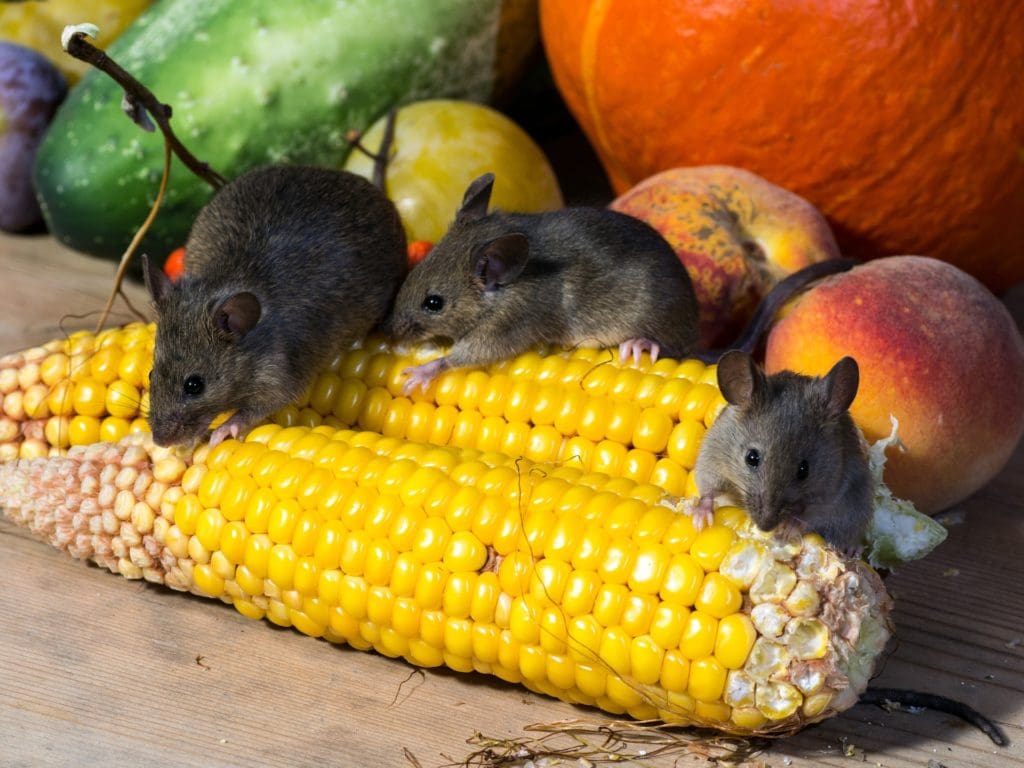
Disease Prevention
Diseases spread by mice and rats can be avoided by taking simple preventative measures. For starters, eschew contact with non-domesticated rodents. Take measures to make your home and/or business inhospitable places for rats and mice to breed.- Avoid getting into water that you think might be contaminated by rat or mice urine and droppings.
- If your work requires you to encounter anything you think might be contaminated, such as soil, water, or infested buildings - always wear robust footwear and clothing that covers your arms and legs.
- Before starting up your mower, inspect your yard for diseased or dead rodents. Dispose of these before you begin mowing. Remove any rodent nests, and any urine or feces.




